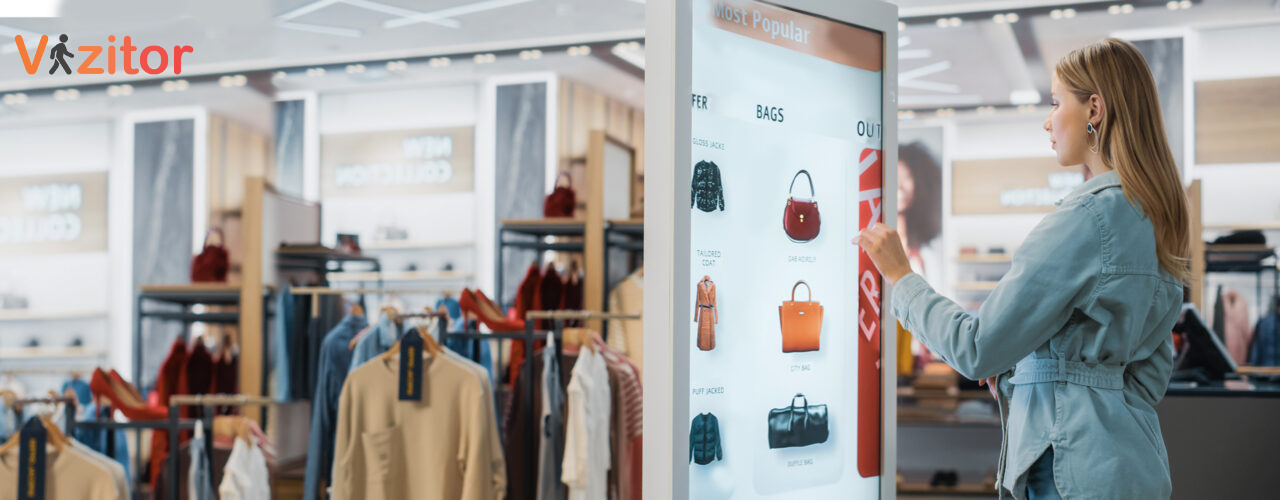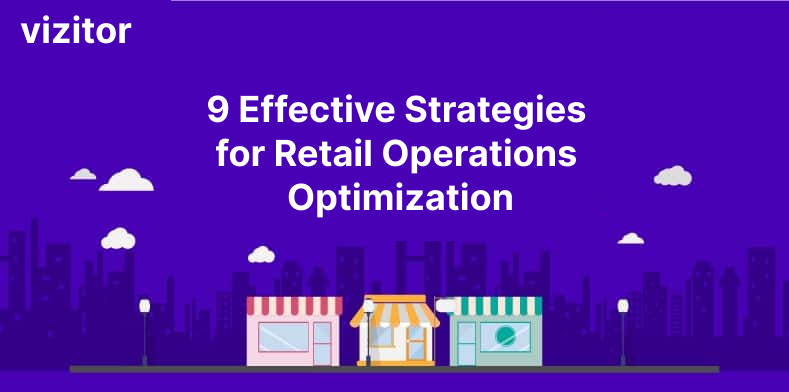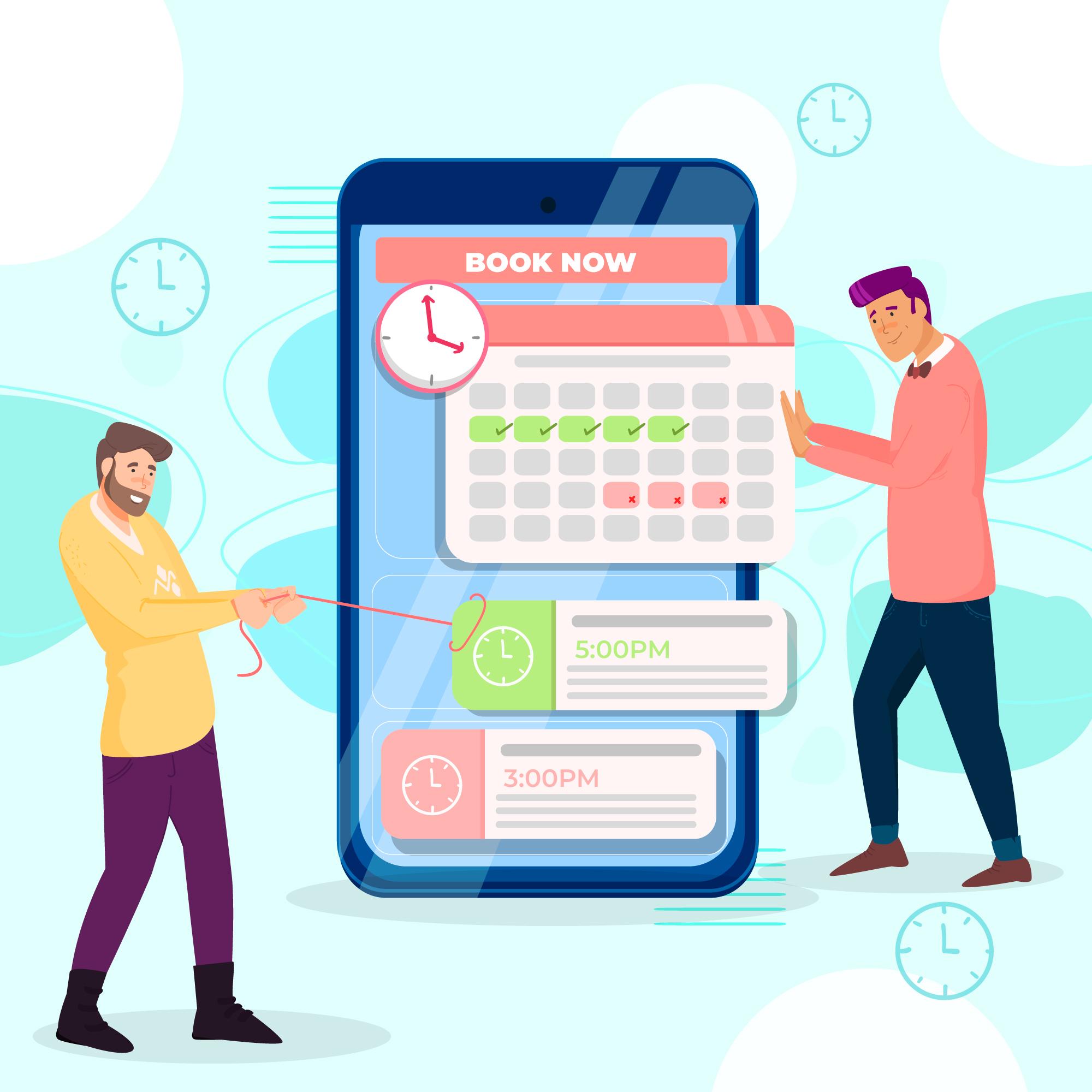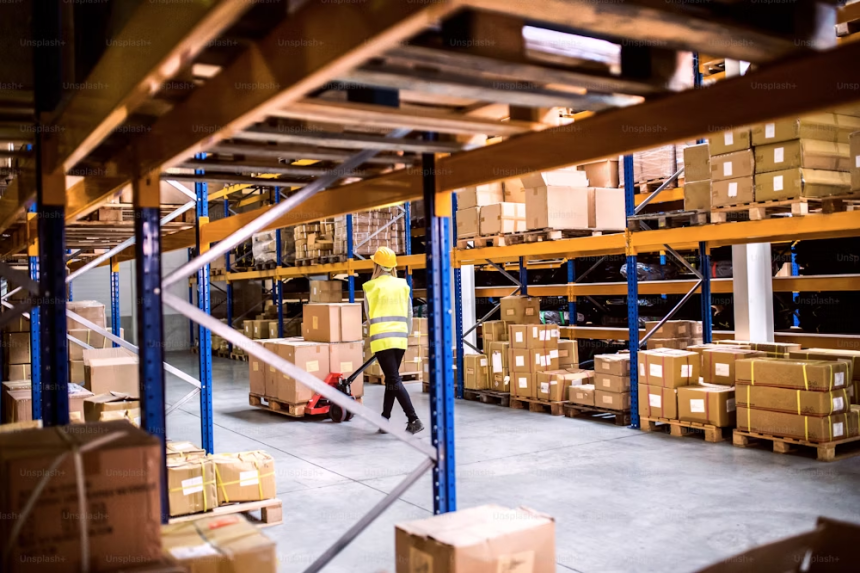Table of Content
Try Vizitor for Free!

Wed, Apr 2, 2025
Read in 9 minutes
Are Long Lines and Frustrated Customers Hurting Your Retail Store’s Success?
Have you ever walked into a retail store and felt overwhelmed by long queues, messy aisles, or unhelpful staff?
Whether it’s a grocery store, fashion boutique, or large retail chain, operational inefficiencies can seriously hurt customer satisfaction and sales.
Every retail store, whether a grocery store or a clothing retailer, faces challenges in ensuring smooth and efficient operations. One major area that impacts store performance is queue management.
These experiences not only affect the customer’s mood but can also hurt sales and overall business efficiency. So, Optimizing Retail Store Operations is no longer optional – it’s a necessity. Streamlining retail store processes and smart queue management systems can enhance customer satisfaction, improve employee productivity, and ultimately increase your profitability.
In this post, we’ll share some simple and effective strategies to optimize your retail operations. With the right strategies, you can make significant improvements across your store operations and create a seamless experience for both customers and staff.
What are Retail Store Operations?
Retail store operations include everything involved in the day-to-day functioning of a store, from managing inventory, employee performance, and customer service, to ensuring smooth queue management and checkout processes.
Effective retail operation management is crucial for meeting customer expectations while maintaining profitability and smooth workflows.
Why Optimize Retail Store Operations?
Think about a busy supermarket. During peak hours, if the lines are long and customers feel ignored, they’re likely to walk out or decide not to return. A clothing store with poorly organized inventory and slow checkout can leave shoppers frustrated, leading to abandoned purchases.
Store Operation Management can address these issues directly—ensuring faster checkouts, better stock management, and ultimately happier customers.
When operations run smoothly, your team is more efficient, customers are happier, and you can get better Let’s take a closer look at common problems related to queues in retail stores and how they impact overall operations:
Long Wait Times
During a sale or promotions, long queues at checkout counters cause frustration and abandoned carts. Customers often leave the store without completing their purchases. Implementing a Queue Management System (QMS) helps by displaying wait times and streamlining customer flow.
Understaffed Checkouts
When there are not enough employees available in stores to handle the rush, service becomes slow. This not only leads to reduced sales but also creates stress for employees and affects their productivity.
Frustrated Customers
Slow grocery store operations and checkout speed can directly lead to customer dissatisfaction. When customers feel their time isn’t valued, it negatively impacts their experience, causing them to rethink visiting again or shopping at all.
Loss of sales
Inefficient Queuing process without a digital system, queues can become more chaotic, wasting both time and resources.
Poor queue organization results in loss of sales opportunities and negatively impact store productivity and efficiency.
Implementing the right tools and technologies ensures your team can focus on customers instead of manual, time-consuming tasks.
9 Effective Strategies for Retail Operations Optimization
Improving the efficiency of retail store operations is key to business success. Here are some simple and effective strategies to improve retail processes using advanced technology, and handling inventory better.
By applying these strategies, businesses can work more efficiently and provide a better experience for customers.
The goal is to offer businesses a clear plan to boost profits and stay flexible in meeting customer needs and market changes. Let’s look at these straightforward methods that can help improve retail operations.

1. Streamlining Retail Operations
Efficiency is key to running successful retail operations.The first step toward improving retail operations is to streamline your store’s processes.
Streamlining store processes means finding and fixing common issues,using digital queuing, removing unnecessary steps, and improving workflows.
By reviewing and improving each part of the operation, businesses can run more smoothly and save costs. This leads to faster service and enhanced customer productivity, which customers will notice and appreciate.
Stats: According to a study by the National Retail Federation, Walmart’s AI-driven checkout solutions have helped reduce inventory loss by 15%.
Also,Sam’s Club reported a 27% increase in basket size among users of its Scan & Go app compared to traditional checkout methods.
2. Digital queuing Systems
Queue Status Updates: Digital queue displays are transforming the customer waiting experience by offering real-time updates on wait times and queue status.
Efficient Resource Allocation: With better insights into customer flow, retail store managers can adjust staff levels, cutting down on idle time.
Enhanced Customer Satisfaction: Streamlined Queue Management Systems improves the overall experience, making it quicker and more efficient for customers.
Optimized Retail Store Operations: Implementing digital signage increases operational efficiency, ensuring smoother customer service and reduced waiting times.
Studies show that digital signage can reduce the perceived wait time by up to 35%, making the wait feel shorter and improving customer satisfaction.
3. Effective Staffing Adjustments
In a department store, some customers receive fast service, while others wait for a long time due to lack of structure in queue management, leading to dissatisfaction and inconsistency.
Real-time staffing arrangements are necessary for optimizing retail or grocery store operations. In a smart retail environment, businesses must be able to respond quickly to changing customer demand.
By using real-time data, retailers can adjust staffing levels accordingly to ensure they have the right number of employees during busy times, and optimize labor costs during slower periods.
This type of streamlined and timely adjustments helps retail businesses maintain smooth operations, deliver excellent customer service, and keep costs under control.
4. Touchless Check-ins/Checkout Options
Contactless check-in/checkout has become essential for modern retail operations management.By utilizing technologies like QR codes, stores can speed up the checkout process, enhance customer safety, and reduce wait times.
Studies show that retailers who have implemented contactless options report faster transactions and improved customer satisfaction.
Vizitor’s Queue Management System seamlessly integrates with this, allowing stores to efficiently handle customer flow, especially during busy hours. With real-time updates, customers spend less time in line and more time enjoying their shopping experience.
5. Implementing Self-service kiosks
Self-checkout and self-service kiosks are changing the way customers shop. With these tools, customers can complete their purchases without needing a cashier, which helps speed up the checkout process. This makes shopping more convenient, giving customers more control and allowing them to finish their transactions faster. Retailers with optimized operations see 10-15% increase in revenue and production sales.
6. Strengthening Customer Relationship Management
Building strong customer relationships is key to ensuring long-term success in retail. A Customer Relationship Management (CRM) system helps businesses manage all customer information in one place, track interactions, and send personalized messages that enhance the shopping experience.
By analyzing customer behavior and preferences, retailers can improve marketing strategies, tailor their services according to customer needs.
CRM is more than just a tool to make customers feel valued; it provides valuable insights for smarter business decisions.
7. Tracking Operational Performance
To streamline store operations, it’s essential to continuously track real-time performance.
By using key performance indicators (KPIs), businesses can gain regular insights into sales trends, inventory efficiency, and customer satisfaction. These metrics help businesses identify areas that need attention, allowing them to make data-driven adjustments in real-time.
Monitoring performance consistently means staying on top of operational challenges and ensuring everything runs smoothly.
8.Virtual Queue Management Systems
Retailers can take advantage of virtual queue management systems that allow customers to queue digitally via their phones, freeing them from physically standing in line.
Customers can continue shopping until it’s their turn to check out, improving the overall shopping experience. A study found that 84% of grocery store shoppers felt that digital screens made waiting in line less stressful.
9. Enhance Staff Training and Productivity
Your staff plays a critical role in store operations. Regular training ensures they’re well-equipped to handle customer inquiries, use new tools, and follow store processes efficiently.
Some important Tips:
• Use real-time reporting tools to measure employee performance.
• Assign specific roles to each staff member to avoid confusion.
• Encourage open communication so employees can provide feedback on operational challenges.
Why Choose Vizitor for Streamlining Your Store Operations?
Vizitor offers smart queue management and visitor management features for improving retail store’s operational productivity. Vizitor offers:
Real-Time Updates: Display live queue statuses to keep customers informed and reduce perceived wait times.
Efficient Resource Allocation: Optimize staff schedules based on queue data, ensuring better service.
Self-Check-In Kiosks: Reduce congestion by enabling customers to check in and select services independently
Actionable Analytics: Gain insights into customer behavior and wait times to improve store performance.
Frequently Asked Questions (FAQs)
1. How can I optimize my retail store operations?
To optimize your retail store operations, start by streamlining workflows, digitizing queue management, using real-time staffing tools, and tracking performance metrics. Implementing digital signage, contactless checkout, and self-service kiosks also boosts in-store efficiency and improves the overall customer experience.
2. What is a queue management system for retail stores?
A queue management system (QMS) is a tool that helps retail stores organize and manage customer lines effectively. It provides real-time updates on wait times, helps prioritize services, and reduces physical crowding—leading to better customer satisfaction and smoother operations.
3. Why is digital queuing important in retail?
Digital queuing helps reduce perceived wait times, improve store traffic flow, and prevent overcrowding. Customers can join virtual lines via their smartphones or kiosks, allowing them to continue shopping or browsing until it’s their turn—enhancing the overall retail journey.
4. How does operational efficiency affect retail sales?
Efficient retail operations lead to faster service, better inventory management, and improved staff productivity—all of which contribute to a better customer experience. This directly impacts sales by reducing cart abandonment and encouraging repeat visits.
5. What technologies help optimize retail operations?
Modern technologies that improve retail store efficiency include:
- Queue management systems
- Self-checkout kiosks
- CRM platforms
- Digital signage
- Touchless check-in tools
- Retail analytics dashboards
These tools help automate manual tasks, monitor performance, and enhance customer engagement.
6. Can optimizing store operations reduce customer churn?
Yes! A well-organized store with short wait times and efficient service creates a positive shopping experience. Happy customers are more likely to return and recommend your store to others—reducing churn and boosting loyalty.
7. Is Vizitor suitable for both small and large retail chains?
Absolutely. Vizitor is designed to scale with your business. Whether you’re running a single boutique or managing a nationwide retail chain, its queue management, visitor tracking, and real-time analytics features can improve operational flow and customer satisfaction across the board.
Final Thoughts:
As the retail world evolves, businesses must stay agile and adapt to changing market demands to thrive. By focusing on optimizing retail operations, companies can enhance efficiency, improve customer experiences, and achieve long-term success.
Above discussed strategies from streamlining processes using smart digital solutions like queue management systems to embracing self-service options—play a crucial role in improving operations and driving customer satisfaction.
Whether you’re managing grocery store operations or running a cloth shop,these effective measures will not only help businesses adapt to current challenges but also position them for growth and success in the future.
Looking for a powerful tool to simplify your store processes? Explore Vizitor, an all-in-one solution for visitor management, queue optimization, and more.
Related Reads:










